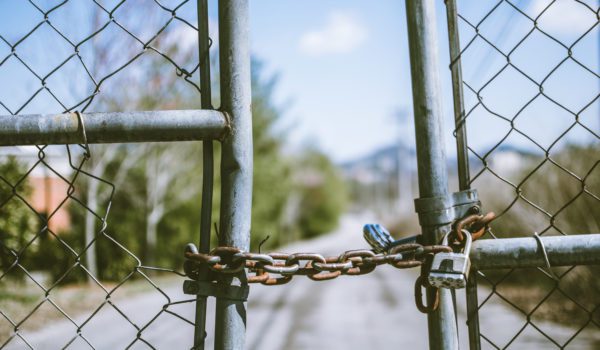Under Ohio’s Dormant Mineral Act (DMA), what happens when the “holder” of a severed mineral interest is a dissolved corporation? The Seventh District Court of Appeals in Ohio has provided clarity on this question in its recent opinion in H. Joseph Hamm v. The Lorain Coal & Dock Company.[1]
The property at issue is a 155-acre tract in Belmont County, Ohio. On September 24, 1900, Carlos Leatherwood conveyed all “minerals, oil, gas and other substances” underlying the property to American Sheet Steel Company.[2] American Sheet Steel Company later changed its name to American Sheet and Tin Plate Company and then merged with the Carnegie-Illinois Steel Corporation.[3] On December 16, 1937, the Lorain Coal & Dock Company (“Lorain Coal”) obtained the mineral interest by a warranty deed from the Carnegie-Illinois Steel Corporation.[4] Despite still owning these mineral rights, on August 5, 1963, Lorain Coal filed a certificate of dissolution.
Lorain Coal was founded in part by Edward N. Sanders.[5] His son, Edward Jr. worked for Lorain Coal, and when Edward Jr. died, his will provided that the residue of his estate, including shares of Lorain Coal, would be placed in a trust for the benefit of his descendants, including his son, Edward III.[6] The Saunders appellants are heirs of Edward III (the “Saunders heirs”).
In 2018, appellees, H. Joseph Hamm, et al., who owned the surface estate, sought to abandon the severed minerals under the 2006 DMA, and served the dissolved Lorain Coal Company with its notice of intent to abandon via certified mail and then via publication.[7] Following the requisite periods, appellees filed affidavits of abandonment stating that the mineral interests had been abandoned.[8]
On October 15 and 16, 2018, Anne Czarniecki, who claimed to be an heir of Frances Hannay (an alleged Lorain Coal shareholder) assigned a mineral interest to defendant Thunderbird Global Development, LLC, and both of them filed claims to preserve based upon the claims that they were holders of the severed minerals.[9] The defendants/appellants argued that because after Lorain Coal was dissolved in 1963, its assets automatically transferred to its shareholders as a matter of law and that, because Czarniecki was the heir of a shareholder, her claim to preserve functioned to stop any abandonment under the Ohio DMA.[10]
The trial court disagreed, granting summary judgment in favor of the plaintiffs/appellees. On appeal, the Seventh District affirmed. Most importantly, the court addressed Ohio law as it pertains to dissolution of corporations and the distribution of assets: “A corporation in Ohio continues to exist after a certificate of dissolution has been filed and continues to exist until it has been completely liquidated.” Commonwealth Tel. Co. v. Bowers, 174 Ohio St. 141, 143, 187 N.E.2d 30 (1962). Thus, “[e]ven years after the articles of incorporation have been cancelled, a corporation can still inherit property.” Hamm, citing N. Kenova Dev. Co. v. Wilson, 4th Dist. Lawrence No. 08CA6, 2008-Ohio-6269, ¶ 21, citing McFeely v. Gervin, 5th Dist. Stark No. CA-8382, 1991 WL 200303 (Sept. 23, 1991).
Here, the problem for defendants/appellants was that they proffered no evidence that the directors of the Lorain Coal Company distributed the assets to the shareholders as part of the dissolution.[11] Quite the opposite, the evidence was that the shares were not inherited,, and when Lorain Coal dissolved, all shares were turned in by the shareholders or retired in 1969.[12] This meant the only party that could have filed a claim to preserve would have been Lorain Coal.
But how can a dissolved corporation take any formal action? The Seventh District referenced R.C. 1701.88(F), which provides a mechanism for distribution of newly discovered property after the dissolution of the corporation and pointed out that the appellants could have sought the appointment of a receiver to handle proceedings in the name of the Lorain Coal pursuant to R.C. 1701.88(F), but they did not.[13] As a result, the interest of Lorain Coal was properly quieted by the trial court.
With this argument lost, the defendants/appellants argued that the severed mineral interest was preserved regardless because Czarniecki was a holder and her timely claim to preserve preserved the rights of all holders.[14] But this argument failed because while Czarniecki’s affidavit asserted claims of ownership, it lacked supporting evidence.[15] In summary, the court found no evidence that Hannay owned stock in Lorain Coal when it was dissolved in 1963; that Czarniecki’s mother owned stock or mineral interests in Lorain Coal when she passed away in 2013; or that any stock or mineral interest passed to Czarniecki.[16]
The question of how property interests pass by a dissolved corporation is one that comes up with title examination. Hamm provides a useful review of Ohio’s statutory mechanisms for how a dissolved corporation can address newly discovered property following dissolution.
For more information, contact Michael Brewster or any attorney with Frost Brown Todd’s Energy industry team.
[1] H. Joseph Hamm, et al. v. The Lorain Coal & Dock Company, et al., 2022 Ohio-1048, 2022 WL 967292 (Ohio Seventh District, 2022)
[2] Id. at ¶ 3.
[3] Id.
[4] Id. at ¶ 4.
[5] Id.
[6] Id. at ¶ 5.
[7] Id. at ¶ 7.
[8] Id.
[9] Id. at ¶ 8.
[10] Id.
[11] Id. at ¶ 42.
[12] Id. at ¶ 38.
[13] Id. at ¶ 40 and 41.
[14] Id. at ¶ 43.
[15] Id. at ¶ 46 and 47.
[16] Id. at ¶ 47.

